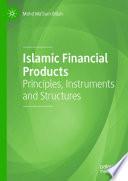
Risk Analysis for Islamic Banks
Islamic finance is emerging as a rapidly growing part of the financial sector in the Islamic world and is not restricted to Islamic countries, but is spreading wherever there is a sizable Muslim community. According to some estimates, more than 250 financial institutions in over 45 countries practice some form of Islamic finance, and the industry has been growing at a rate of more than 15 percent annually for the past several years. The market's current annual turnover is estimated to be $70 billion, compared with a mere $5 billion in 1985, and is projected to hit the $100 billion mark by the turn of the century. Since the emergence of Islamic banks in the early 1970s, considerable research has been conducted, mainly focusing on the viability, design and operations of a deposit-accepting financial institution, which operates primarily on the basis of profit and loss partnerships rather than interest. This publication provides a comprehensive overview of topics related to the assessment, analysis, and management of various types of risks in the field of Islamic banking. It is an attempt to provide a high-level framework (aimed at non-specialist executives) attuned to the current realities of changing economies and Islamic financial markets. This approach emphasizes the accountability of key players in the corporate governance process in relation to the management of different dimensions of Islamic financial risk.
- ISBN 13 : 0821371428
- ISBN 10 : 9780821371428
- Judul : Risk Analysis for Islamic Banks
- Pengarang : Hennie van Greuning, Zamir Iqbal, Zamir Iqbal, Zamir Iqbal,
- Kategori : Business & Economics
- Penerbit : World Bank Publications
- Bahasa : en
- Tahun : 2008
- Halaman : 336
- Google Book : http://books.google.co.id/books?id=Ejl-sEs4yPMC&dq=intitle:Banks+and+Financial+Institutions&hl=&source=gbs_api
-
Ketersediaan :
Islamic finance is emerging as a rapidly growing part of the financial sector in the Islamic world and is not restricted to Islamic countries, but is spreading wherever there is a sizable Muslim community.









